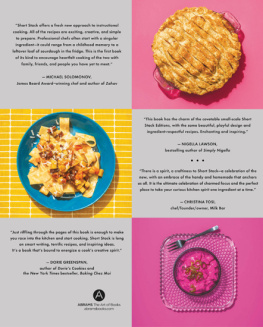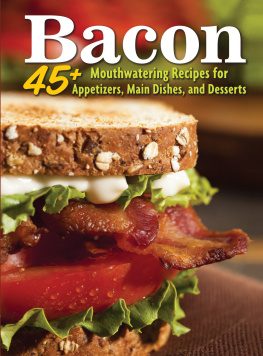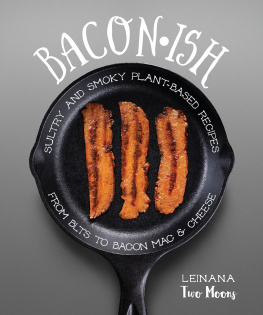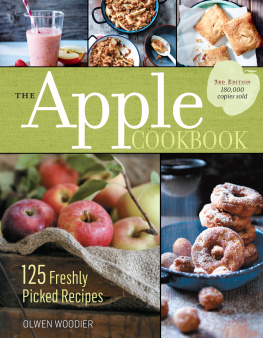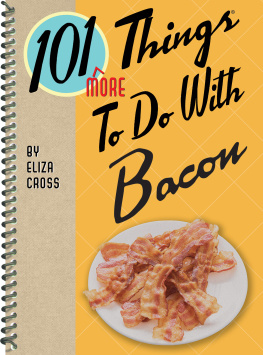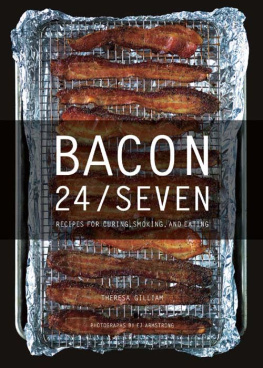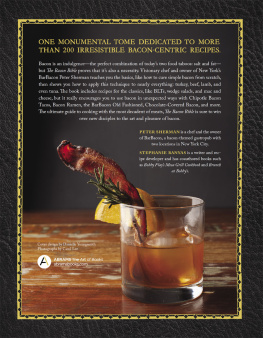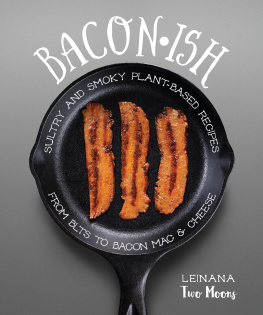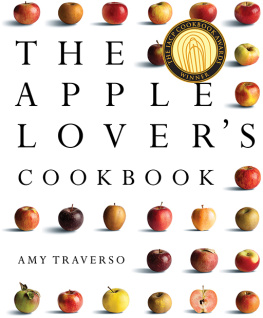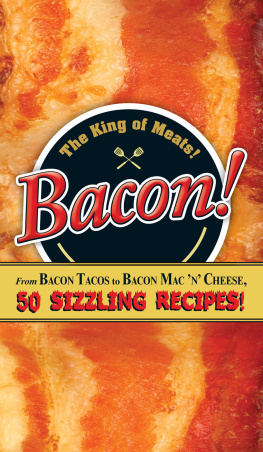
The mission of Short Stack Editions is simple: To celebrate Americas top recipe-makers and their favorite ingredients through inspiring, accessible recipes. To do so, founders Nick Fauchald and Kaitlyn Goalen have called upon the most trusted voices in the culinary worldaward-winning cookbook authors, chefs, food writers, recipe testers and editorsto create dependable, resourceful recipes that home cooks can use again and again.
Building upon the popularity of their small-format, single-subject editions, the first full-size cookbook from the Short Stack team showcases 18 essential ingredients, each of which provides a new perspective in the kitchen and reflects how we cook today. With recipes showcasing apples, bacon, brussels sprouts, butter, cheddar, chicken, chile peppers, eggs, Greek yogurt, honey, kale, lemons, mayonnaise, rice, sourdough bread, tomatoes, wild shrimp and winter shrimp, The Short Stack Cookbook offers new ways to cook with your favorite everyday ingredients.


A
TABLE OF CONTENTS


A
IT STARTS WITH INGREDIENTS
Were romantics when it comes to cooking at home. Unapologetically sentimental and downright enthusiastic.
We love the process of choosing our food, whether its carefully sourcing ingredients for a recipe or doing a routine refill on the things we always want around (nothing is nicer than a fully stocked fridge, right?). And we fallhard, every timefor the act of cooking itself, the muscle memory that clicks on when we begin to dice an onion, the music we like to play while bouncing around the kitchen, the secret self-congratulatory thoughts when we manage to keep the kitchen clean while we cook. But most of all, we love that cooking offers a clear and immediate way to create, to take raw materials and transform them into an end result that satisfies on multiple levels.
Recipes are the trail maps that lead us to this success and inspire a sense of masterybragging rights and all. And theres plenty of romance in that. Recipes can be time capsules, scribbled over with notes in the margin from a grandmother, friend or a complete stranger. And a good recipe offers both consistency, producing the same result time after time, and flexibility, as we riff and refine with each use. When we pine for familiarity, that guarantee of comfort is a powerful force. Isnt that the same stuff that love stories are made of?
Even more evocative than recipes, though, are ingredients themselves. For most of us, ingredients are the entry point to a passion for cooking. As kids, we fixate on what we like and dislike, and that instinctive pull continues throughout adulthood, guiding our choices and helping us find the recipes that become our staples.
Anyone who cooks with any regularity hits a tipping point where they relinquish the safety of recipes and charge into the kitchen without them. In these moments, ingredients become even more critical, whether youre making something from memory or completely improvising. We rely on them to remind us how to get from point A to point B. It requires a level of trust, some intuition and a lot of paying attention to what youre cookingall things that imbue the process with a sense of magic, particularly when you end up with something deliciousor at least pleasantly edible.
These days, our decision of what to cook very often starts with an ingredient, whether its a beautiful piece of fruit or vegetable from the market, a wedge of exciting cheese weve stumbled across or a craving for a specific cut of meat. Only once weve chosen the lead actor is the script written and the cast assembled. Well either seek out a recipe that spotlights our muse, or wing it based on our previous knowledge of the ingredients potential in the kitchen.
This is not a new way of thinking about ingredients (although the extreme fetishization and documentation of them might be); its really more a return to a former relationship with food. A few generations ago, most home cooks had a limited selection of ingredients to choose fromalmost exclusively grown, raised or caught nearbyand this supply shifted with the seasons. Every year, mothers and grandmothers invented new ways to use up the seasons offerings, and eventually they began to write down and share those recipes, first with their friends, then their churches and communities, then by publishing them in flyers, newspapers and cookbooks.
But the 20th century changed everything. Industrial innovation and wars brought us processed and frozen food. Advances in home appliances and cooking technology allowed home cooks (mostly women) to work less in the kitchen and more elsewhere. Fast food was invented and quickly evolved from novelty to epidemic. Americans started cooking less for basic sustenance and more for pleasure and entertainment.
That was a terribly condensed history, but it leads us right back to ingredient-driven cooking. Many of todays cooksamateur and professionalhave gone back to the old ways, letting the seasons and local ingredients drive their appetites and creativity. Allowing ingredients to be the guide makes us better (and usually healthier) cooks. When you focus on a recipe, you master that one recipe. But when you get a deep understanding of one ingredient, you can broaden your horizons. The more ingredients you master, the more intuitively you can cook. And the more enjoyable, magical and romantic the process of cooking becomes.
THE BIRTH OF SHORT STACK EDITIONS
This idea was one of the driving forces behind Short Stack Editions, our series of miniature cookbooks that each showcases a single ingredient. By focusing a set of recipes around one ingredient, we hoped to capture everything we loved about cooking: the reliability and consistency of a great recipe and the intuitive, freewheeling confidence that ingredients help us develop as cooks. We wanted to celebrate the things that had led us to make careers out of this passion.
It also came out of feeling that those very things were increasingly under attack.
We spent the first years of our careers working in New York City at food-centric magazines, where every published recipe was the product of a team of highly skilled professionals. By the time a recipe hit the newsstand, it had been passed through multiple recipe testers, editors, proofreaders, fact-checkers and so on.
But then the Internet happened. Wed come of journalistic age during what we know now as the high-water mark of print publishing. Then, as advertising dollars moved to the Web in the late aughts, and magazines and newspapers began to shrink or fold as a result, we followed the money over to the digital side of publishing, taking with us the ideology we inherited from print: If youre going to proudly share recipes with the world, theyd sure better work.
But the Internet wasnt playing by the same rules. Remember the first time you discovered that a quick Web search for, say, apple pie recipe, could offer you thousands of options in an instant? We do. It seemed magical. But do you also remember the first time you got burned (figuratively or literally) by a recipe you pulled from an unfamiliar website? Same here. We cant count the number of times someone has complained to us about a flawed recipe they found online. The same thing that makes the Internet so democratizing and liberatinganonymity and accessis the same thing that offers us so many broken apple pie recipes.
Next page
